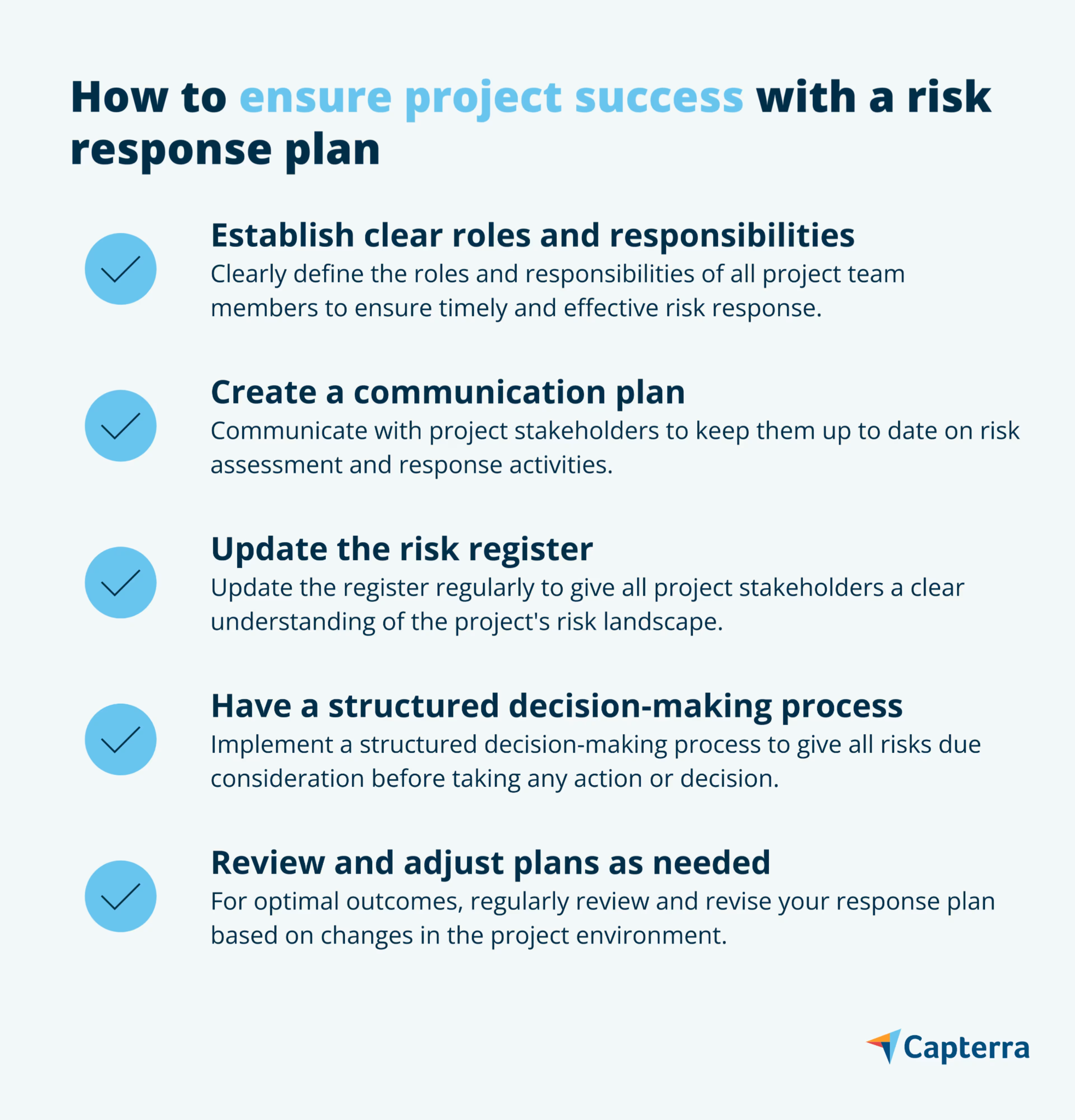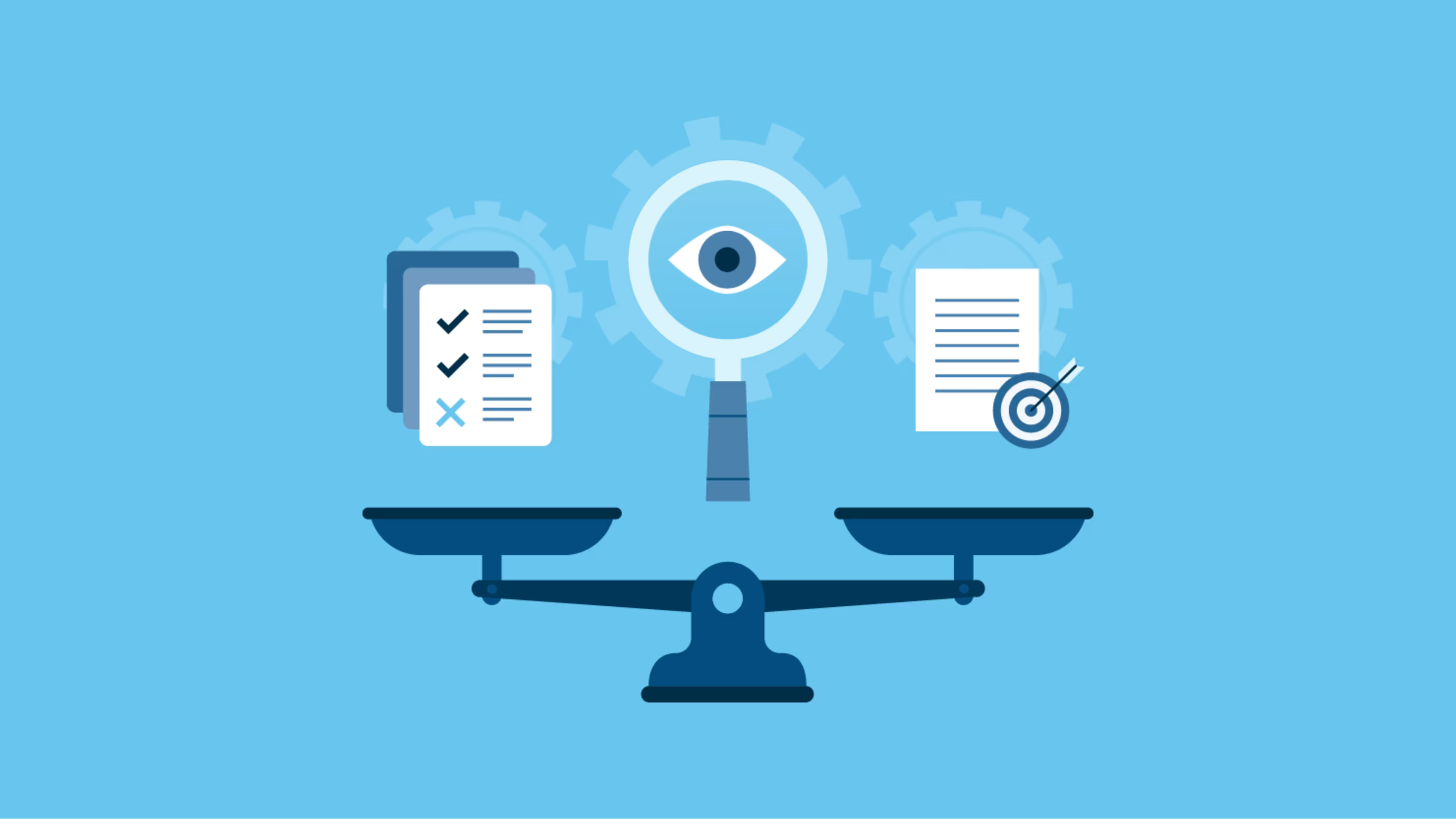Minimize risks and keep your projects on track with a risk management process.
No matter how experienced you are as a project manager or how well you plan project tasks, things can still go wrong. There are some risks that you can't entirely avoid or manage. And this is in addition to your core job of keeping projects on track to achieve goals.
So, how do you deal with unexpected project risks? Risk planning is the solution.
Planning for risks is key to project success. You can't stop every problem, but you can prepare for them in advance so your project schedule is not disturbed.
If you don’t know where to begin with project risk management, you are at the right place. In this blog, we list four steps to set up an effective risk management process that will help ensure your projects are completed on time and with utmost efficiency. But first, let's learn the basics!
What is the risk management process, and why is it necessary?
The risk management process is a critical step in project management. It helps identify potential risks and devise a plan to address them before they cause any serious issues and eventual project failure.
This process typically involves risk identification, assessment, response, monitoring, and reporting. For most projects, the risk management process helps tackle three types of risks: technical, organizational, and external.
Technical risks: These are risks associated with the technology involved in your project. They might include failure in design or construction, problems with software or hardware, or issues with data security.
Organizational risks: These risks come from within your company; for example, when a project team member quits or when your business doesn’t have adequate funds.
External risks: These risks come from outside your organization. Some examples are natural disasters, market fluctuations, economic instability, and pandemics.
To ensure your projects work well and meet their goals, it’s important to have a risk management strategy in place. It will help you avoid or reduce any negative impact the risks may have.

1. Understand and identify risks
Every project involves some risks. It's important to understand and identify risks that could impact your project and take steps to manage and reduce them before they become too big to handle. There are many different ways to identify risks, but it’s best to use a technique that fits your project.
Here are some risk identification techniques to determine and assess potential project risks:
Have brainstorming sessions. Get together with the project team and related stakeholders to brainstorm risk scenarios. This way everyone is on the same page and understands what could go wrong with the project. If a potential risk does materialize, you’ve already thought of a plan to fix it, in most cases.
Use a risk matrix. It’s a tool that rates the probability (low, medium, high) and impact (low, medium, high) of each risk to help you focus on the most likely issues and plan steps for risk mitigation.
Maintain a risk register. By recording information about each risk (such as its description, potential impact, and likelihood), a risk register helps track which threats have been identified and what actions have been taken to mitigate them.
Perform SWOT analysis. By assessing the strengths, weaknesses, opportunities, and threats of your project, you can consider all possible risks that may occur and plan steps to prevent or reduce them.
Leverage a cause-and-effect diagram. By assessing the causes and effects of each probable risk, you can identify potential project issues that you may not have otherwise considered.
2. Assess the identified risks
Once you have identified all possible risks, it’s time to assess how they could affect your project. This step is called risk analysis, and it helps figure out which project threats should be prioritized and what actions should be taken. It involves understanding the consequences of each potential risk event.
Qualitative risk analysis vs. quantitative risk analysis
Qualitative risk analysis is a subjective process that helps assess project crises on a scale of likelihood and impact. It’s used to prioritize project risks and is often employed when little risk data is available or the threats are difficult to quantify.
Quantitative risk analysis relies heavily on data and is often used when it’s easy to quantify risks. It’s usually conducted by experts to make decisions about responding to project risks. This risk analysis approach assigns numerical values to likelihood and impact and then uses mathematical models to calculate the total project risk.
Here are four ways to assess risks accurately:
Risk probability and impact matrix: This matrix helps prioritize risks by assessing how likely they are to happen and how much damage they could do to your project.
Risk ranking: This method ranks risks according to their severity so you can focus on the most critical project issues first.
Risk heat map: This map visualizes risks that are most likely to negatively influence your project.
Risk breakdown structure: This helps you break down risks into categories and subcategories so you can better understand and assess them.
3. Create a response plan
After identifying and assessing risks, the next step is to create a response plan to mitigate them. A clear, detailed response plan will identify potential risks and define how each one will be handled. It will also identify who is responsible for each step in the response process. This way, everyone involved knows their role and can take action quickly.
The image below highlights tips to use a response plan to efficiently manage risk events:

Things to keep in mind when creating a risk response plan
Make sure your plan is achievable and realistic. It's important to have a plan that you can actually implement rather than something impossible or overly ambitious.
Make sure your plan is comprehensive. Your plan should address as many potential risks as possible.
Make sure your plan is timely. The sooner you can put your project risk management plan into action, the better.
Make sure your plan is adaptable. Your plan should be flexible enough to accommodate changes and unexpected events.
Make sure your team is involved. Your team should be familiar with the plan and know their role in implementing it.
Make sure to update your plan regularly. The risk response plan should be updated as new information becomes available.
4. Monitor and control risks
The risk management process is not a “set-and-forget” task, so you must track it regularly. The final step of this process is to ensure you are aware and in control of all identified project vulnerabilities. This includes implementing risk mitigation measures, tracking and reporting the risk status, and preventing further threats.
Regular risk monitoring and control helps execute the response plan as planned. It also ensures any new risks are accounted for and existing ones are kept under control.
Let’s discuss a few measures to monitor and control risks:
Perform trend analysis. Spot patterns or trends in the risk data and identify any potential hazards that may have been missed.
Conduct risk audits. Assess the overall effectiveness of your risk management process and identify improvement areas.
Use risk simulation. Test different project risk scenarios (e.g., what would happen if a supplier failed to deliver a critical component) and check how they impact your project’s outcome.
Implement a risk management plan. Mitigate any project uncertainties that may arise.
Adjust risk control. As the project progresses, adjust risk control measures such as increasing or decreasing the monitoring frequency based on changes in the project risk landscape.
Bring everything together to make your projects risk-free
The best way to prevent project risks from turning into actual issues is to have a well-run risk management process. The steps we discussed can help reduce the chances of nasty surprises in your project roadmap. They can also ensure your project stays on track and delivers the intended results. So go ahead, put your risk management process into action and celebrate project success!
